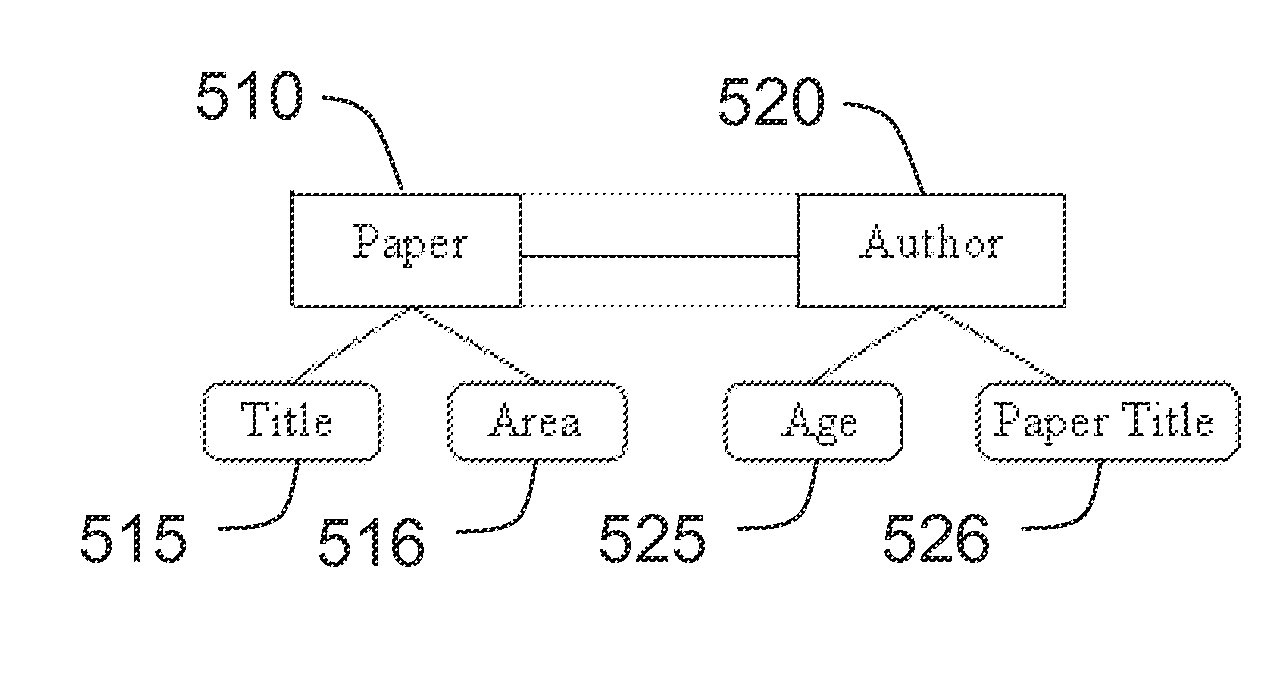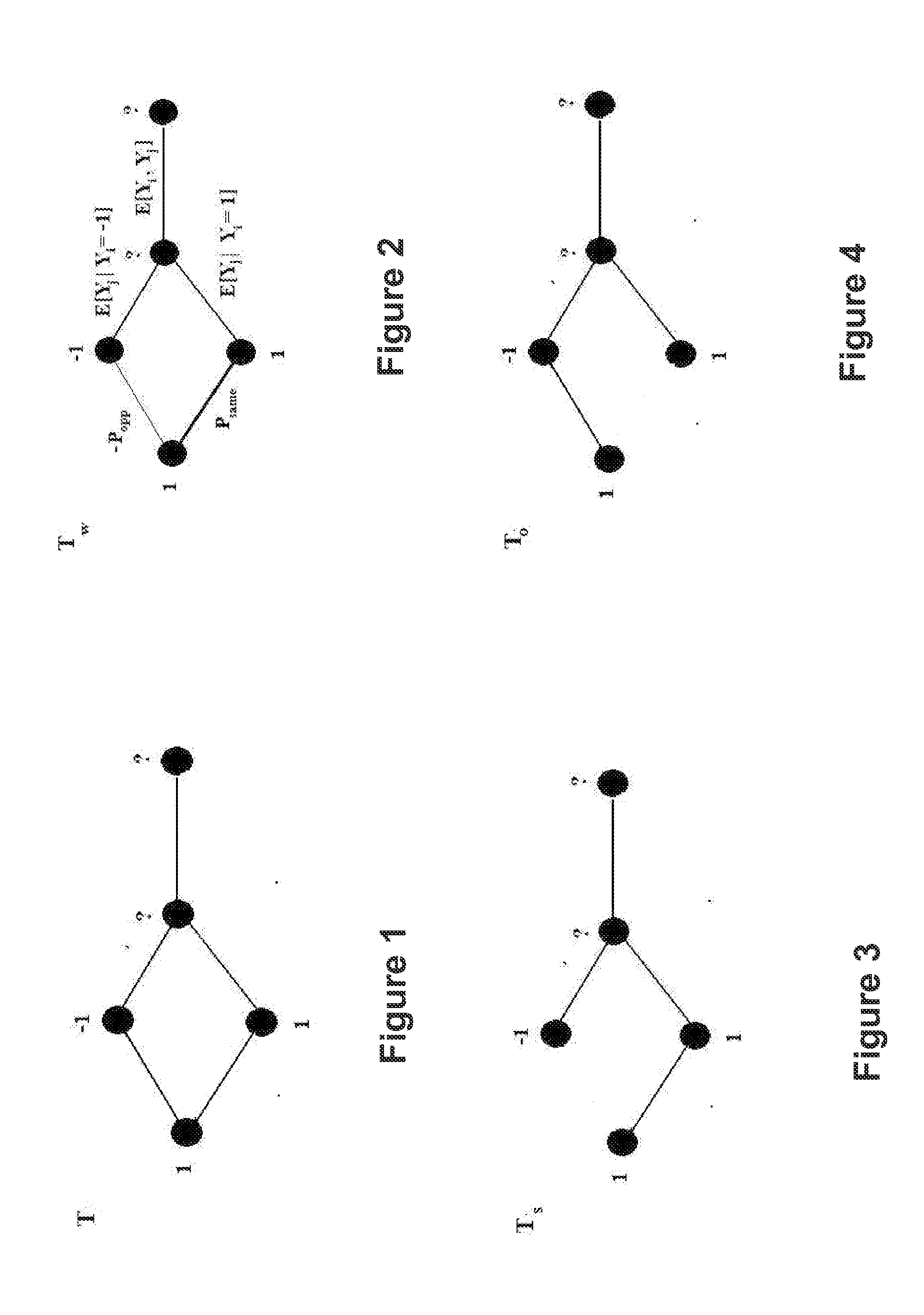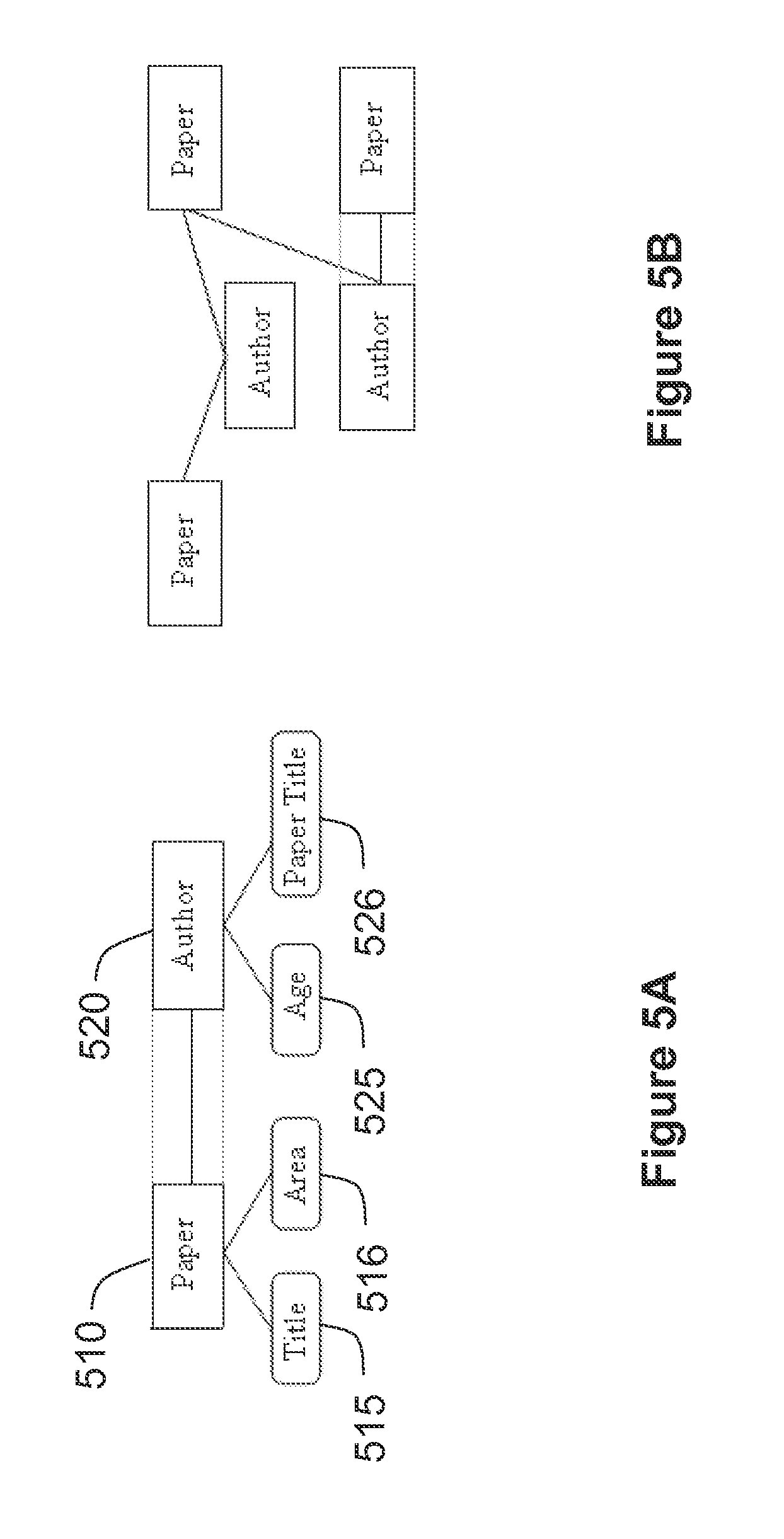System and method for using graph transduction techniques to make relational classifications on a single connected network
a graph transduction and network technology, applied in knowledge representation, instruments, computing models, etc., can solve problems such as inability to accurately predict labels, kernel functions are not easy to adapt to relational settings, and the edge weighting may not provide acceptable, so as to achieve efficient and accurate results
- Summary
- Abstract
- Description
- Claims
- Application Information
AI Technical Summary
Benefits of technology
Problems solved by technology
Method used
Image
Examples
Embodiment Construction
[0022]The notation used in this disclosure is described in the following table, where graph type “D” is directed and graph type “U” is undirected:
TABLE 1SymbolGraph TypeSymanticsNqD and UNumber of nodes with label qNqrDNumber of edges from node withlabel q into node with label rNqrUWhen q = r,Number of edges between nodewith label q and node with label rWhen q / = r,Half of the number of edges betweennode with label q and node with label rNpD and UTotal number of labeled edges i.e. edgeswhere both nodes are labeledPsameD and URatio of the number of edges betweennodes with same label to total numberof labeled edgesPoppD and URatio of the number of edges betweennodes with different labels to totalnumber of labeled edgesDD and UDistribution over labeled edges
Weight Matrix Construction
[0023]In this section we elucidate a way of constructing the weight matrix for a partially labeled graph G(V, E) where V is the set of nodes and E the set of edges. We assume that the labeling is binary, i....
PUM
 Login to View More
Login to View More Abstract
Description
Claims
Application Information
 Login to View More
Login to View More - R&D
- Intellectual Property
- Life Sciences
- Materials
- Tech Scout
- Unparalleled Data Quality
- Higher Quality Content
- 60% Fewer Hallucinations
Browse by: Latest US Patents, China's latest patents, Technical Efficacy Thesaurus, Application Domain, Technology Topic, Popular Technical Reports.
© 2025 PatSnap. All rights reserved.Legal|Privacy policy|Modern Slavery Act Transparency Statement|Sitemap|About US| Contact US: help@patsnap.com



